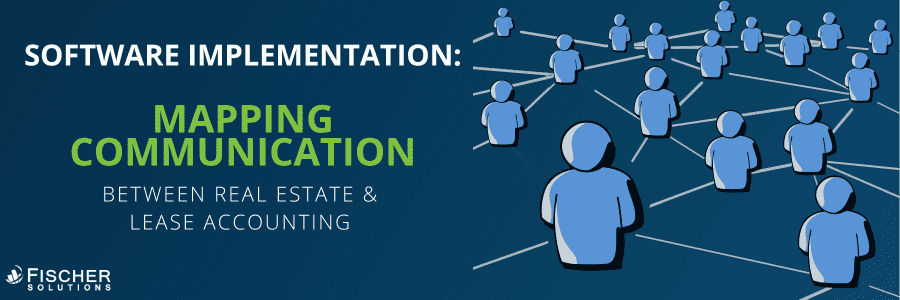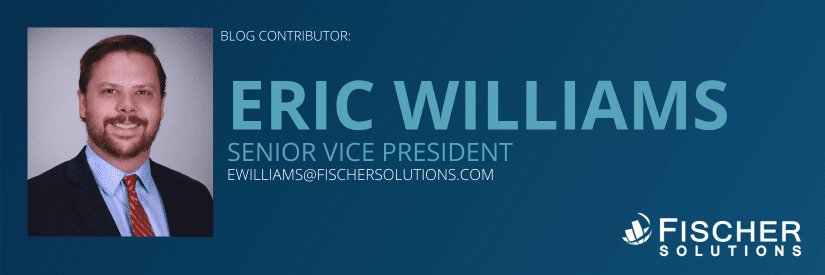Software Implementation: Mapping RE & Accounting Communication
During lease accounting software implementation, effective communication and collaboration between accounting professionals and real estate teams are crucial for success. The introduction of new lease accounting standards has added complexity to lease management, making it more challenging to maintain accurate financial records. However, with the advent of lease accounting software, accounting and real estate professionals can streamline their processes and improve communication, leading to enhanced efficiency and accuracy.
Software Implementation requires effective communication and collaboration between real estate and accounting teams to ensure seamless integration and accurate data management.
Successful software implementation goes beyond just the technical aspects of deployment. Solutions such as ManagePath assist in driving efficiency and maximize the benefits of the implementation process. In this blog post, we will explore how lease accounting software facilitates seamless collaboration between accounting and real estate teams, revolutionizing the way they work together.

Mapping Communication with ManagePath
One of the key benefits of ManagePath is its ability to provide real-time data sharing and transparency. With a centralized database accessible to both accounting and real estate teams, everyone involved can access up-to-date lease information, including lease terms, payment schedules, and critical dates. This transparency fosters better communication and collaboration, minimizing errors and discrepancies.
Collaboration and Communication Tools:
Effective communication is vital for successful collaboration between accounting and real estate professionals. ManagePath includes built-in collaboration and communication tools, such as our accounting admin feature that alerts accounting of updates made by real estate that might impact the asset and liability such as a change in the rent, term, or SqFt. These features enable real-time communication and ensure that all stakeholders are on the same page, enhancing efficiency, preventing duplicative work, and reducing miscommunication.
Defining Processes and Responsibilities:
The biggest key to success with the new accounting standard relates to defining responsibilities between real estate and accounting departments for all activity that can occur within a real estate portfolio. During a typical implementation, Fischer would recommend understanding real estate and accounting’s role in the following scenarios:
- New Lease
- Renewal/Expansion/Reduction
- Termination
- Acquisition
- Impairment/Dark
- Index-Based Rent Increase
- Non-Lease Expense
- MTM Leases
The next section of this blog helps you clearly define your roles and responsibilities during a software implementation.
Communicating Effectively through Software Implementation
To foster effective communication skills between real estate and accounting teams, it is crucial to establish clear and open channels. This includes regular meetings, email updates, and a designated straight line to points of contact for each team.
By creating a communication framework, both teams can stay informed, address challenges promptly, and share insights throughout the implementation process.
1: Define Roles and Responsibilities
Clearly defining roles and responsibilities for the real estate and accounting teams is essential for a successful software implementation. This involves identifying key stakeholders and assigning specific tasks and deliverables to each team member.
By clarifying responsibilities, everyone understands their role in the implementation process and can work collaboratively towards a common goal.
A Guide for Each Stage of Implementation
Our in-house experts at Fischer Solutions developed guidelines to assist with successful software implementation. We do not outsource implementation to third-party firms. Instead, we have a very hands-on approach. Below is a glimpse at how we structure implementation through each stage.
New Lease
Lease administration sets up the initial lease, based on the contract. Lease accounting would then review the lease and set up the initial accounting schedule. Based on your business, you should determine whether:
- Lease administration notify Accounting, OR
- Accounting relies directly on the accounting admin flags
Renewal/Expansion/Reduction
Lease administrators would update the case payments to reflect the revised amendment. Lease accounting would then review the changes for the leased asset and remeasure the accounting schedule. Based on your business, you should determine whether:
- Lease Administration notify Accounting, OR
- Accounting relies directly on the accounting admin flags
Termination
The rent schedule is revised to include any termination payments and modified rent payments based on an effective date. Accounting remeasures the lease for the reduced term and makes any necessary adjustments to write off the ROU to gain/loss.
Acquisition
Discuss the timing of:
- Who is adding confidential leases under pending acquisition
- When they come online.
Also ties into security permissions if we want to exclude access to these leases for general user groups.
Impairment/Dark
Lease Accounting would update the schedule to impair the asset/liability. Typically lease administration doesn’t have to do anything except change the status to Dark in some cases if you want to track a ‘Go-Dark Date’.
Accounts Payable
Generally, base rent expense payments should be specific to gross or net rent payable to the landlord.
- CPI Increases
First, enter the record of the CPI increase on the lease. As the lease administrator updates the actual amount, the net value is booked to variable rent expense.
Accounting is not required to do anything other than review their update in the admin section. If necessary, they will clear the flag due to the rent change.
- MTM Rent
Similarly, the lease administrator would add the MTM rent (either directly on the lease or via our admin MTM page). Lease Accounting would not need to make any updates from there and we would book variable rent expense.
Note: Sometimes auditors have preferred the client to identify a reasonably certain lease term and rent cost if MTM is expected for longer than a few months. If that is the case someone would need to add the ‘expected’ rent and flag it as excluded from AP.
- Security Deposits
If paying security deposits directly through the system, and want to book them as base rent, the lease administrator would need to check the ‘GAAP Exclude’ option on the expense so it does not impact lease accounting.
This might include additional scenarios depending on your lease structure and type of payments. Examples that come to mind would be things like:
- Storage Rent
- Allowance Rebates
- Discount Rates
You will determine what is and isn’t included in your Lease Expense by expense category (under the Base Rent section).
2: Conduct Cross-Team Training and Workshops
To ensure effective collaboration, consider organizing cross-team training sessions and workshops. Real estate team members can gain insights into accounting principles while accounting team members can develop a deeper understanding of real estate operations.
This exchange of knowledge fosters better communication and promotes a shared understanding of the challenges and requirements of both teams.
3: Establish Data Governance Practices
During the implementation process, it is crucial to establish data governance practices that outline:
- data ownership
- data entry protocols
- data validation processes
This helps ensure consistency and accuracy in the data that flows between real estate and accounting systems.
By aligning data governance practices, both teams can confidently rely on the integrity of the data and make informed decisions.
4: Collaborate on Data Migration and Integration
Data migration and integration are key components of a lease accounting software implementation. Real estate and accounting teams should collaborate closely to determine data mapping requirements and ensure seamless data transfer between systems.
By working together, potential data discrepancies can be identified and resolved early on, avoiding issues in the future.
5: Conduct Regular Status Updates
Throughout the software implementation process, conduct regular status updates to keep both teams informed of progress, challenges, and milestones. These updates can be in the form of project status reports, team meetings, or shared project management tools.
Regular communication ensures that everyone is on the same page and allows for timely adjustments if needed.
6: Monitor and Address Challenges
During the implementation, it is essential to monitor and address any challenges that arise promptly. Real estate and accounting teams should collaborate to identify potential roadblocks and develop mitigation strategies.
By actively addressing challenges, the implementation process can proceed smoothly, and issues can be resolved before they impact the final outcome.
Conclusion
Mapping real estate and accounting communication during a lease accounting software implementation is crucial for successful deployment and long-term operational efficiency. Effective communication and collaboration between teams ultimately lead to accurate financial reporting, compliance with accounting standards, and improved operational efficiency. With the right approach, businesses can unlock the full potential of their lease accounting software and optimize their real estate and accounting processes.

